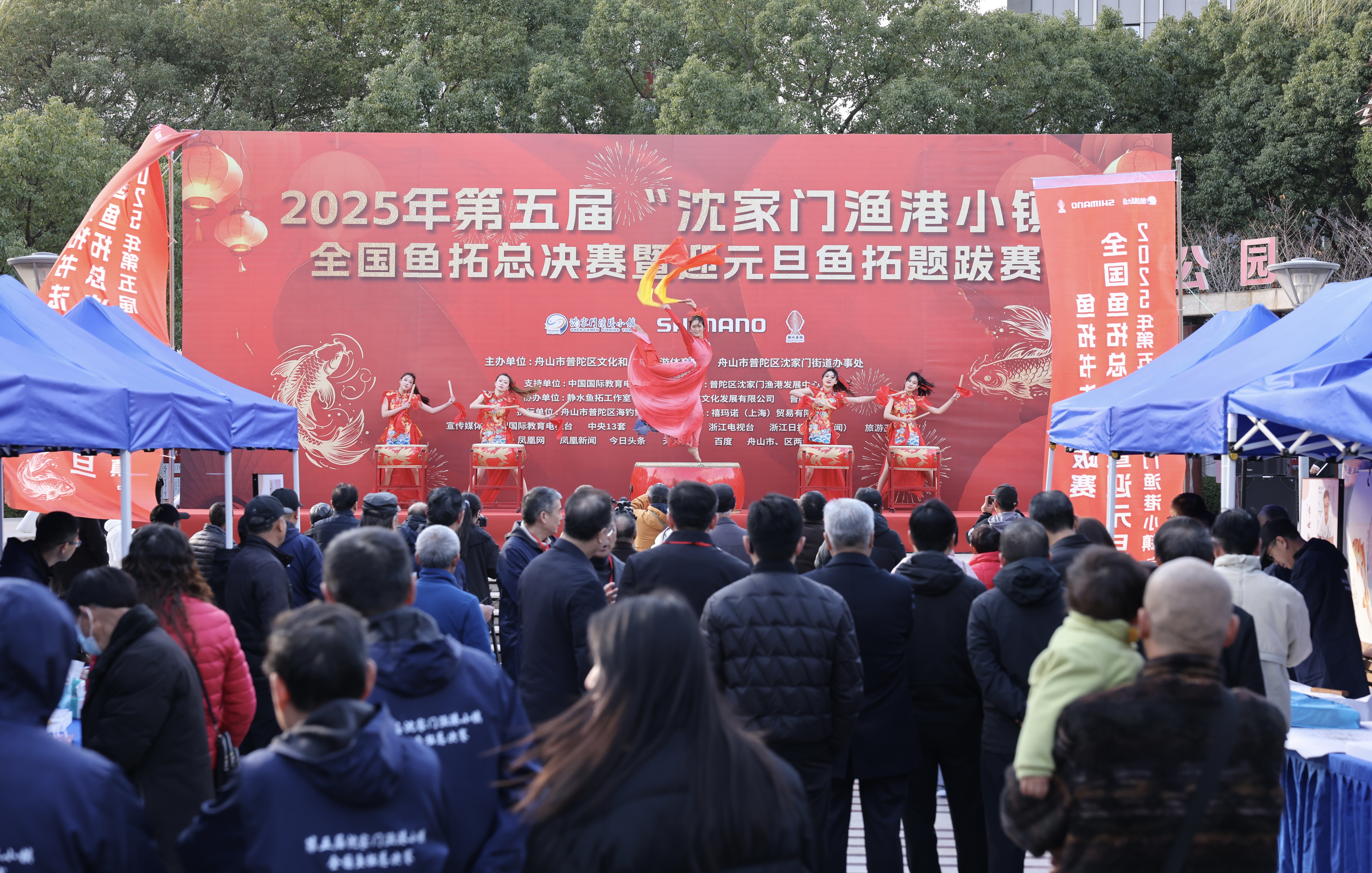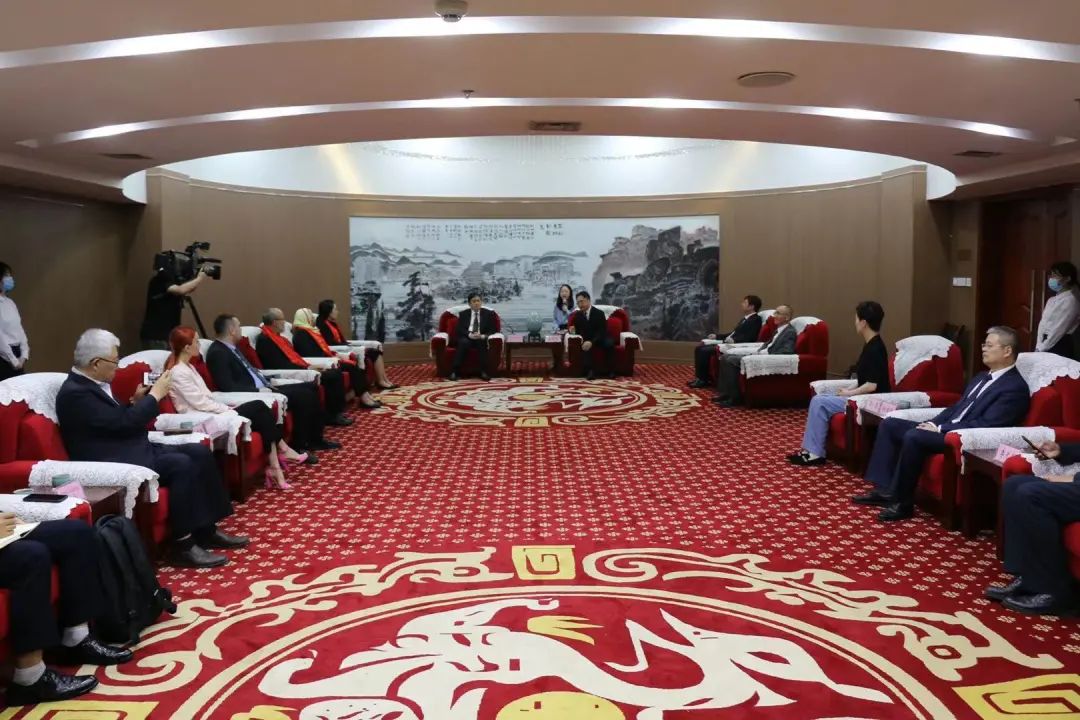澳大利亚的难民待遇是一种全国性的耻辱
来源:
作者:James O’Neill* 点击:
发布时间:2021-03-19 17:43:02
现代澳大利亚人生活中最大的讽刺之一就是对移民的态度,特别是对那些作为难民来到澳大利亚的人。第一批白人殖民者已在250年前到达,由英国囚犯和他们的看守组成。他们发现了一个由土著人居住的国家,他们已经在那里生活了10万年。英国殖民者一直很无视土著人民的权利.
他们做的可不止这些,他们积极反对对他们长期占领的土地的权利。当土著人民反对并试图阻止盗窃他们土地时,结果都被英国殖民者杀害。在美国也有类似不寻常的历史,白人殖民者从原来的13个殖民地向西迁移。土著印第安人口从18世纪的700万左右减少到20世纪初的10万左右。这是人类历史上对土著居民犯下的最大种族灭绝行为之一。
英国殖民者对澳大利亚土著居民的屠杀没有美洲印第安人那么严重,但却是毁灭性的,盗窃土地的政策也是一样的。所有可耕地都被征用并转换为白人定居者的农场。
澳大利亚是一个非常大的国家,需要定居者。一开始,他们绝大部分都是从英国过去的。但是第二次世界大战过后,土地扩张,接纳欧洲移民。二战之后,大量的意大利人和希腊人涌入澳大利亚。
尽管澳大利亚地处亚洲南部边缘,但它从未将亚洲视为主要的移民来源。虽然现在有100多万中国血统的人生活在这个国家(约占总数的4%),但他们受到了歧视和偏见。近年来,随着澳大利亚和中国之间的贸易关系恶化,这种情况将进一步恶化。
澳大利亚人口政策的一个双边特点是不信任来自中东的政治难民。具有讽刺意味的是,澳大利亚的外交政策并非来自中东的“推动”因素中的最小因素,但澳大利亚的政治阶层却完全看不到这一点。
两党的回应是,那个地方的难民不受欢迎。这同样是两党共同采取的防止此类难民进入澳大利亚的办法。为此,政府设立了离岸拘留营,最多时有数千名难民。瑙鲁岛就是这样一个倾弃场。目前有900人被关押在瑙鲁,条件恶劣,其中包括109名儿童。
这些儿童多次试图自杀,有可靠的报告称越来越多的儿童患上了紧张症。澳大利亚议会、联合国和其他国际机构也一再收到关于被拘留者状况和待遇的报道。这些报道都被澳大利亚政府置之不理。澳大利亚政府所持的态度是,这些人的恶劣处境导致他们残忍、非人性和侮辱的行为,他们为了自己和孩子谋求更好生活的"罪名"应当受到惩罚。
政府虚伪的一个表现是,他们拒绝了新西兰提出的接纳150名难民的提议。担心他们会获得新西兰国籍,从而有权来澳大利亚生活和工作。这种信念缺乏任何理性基础,并不是一种威慑。
巴布亚新几内亚采取了更加合理的政策。澳大利亚拘留中心已经关闭,人们可以在社区生活。巴布亚新几内亚向他们提供了公民身份,尽管还没有几个国家接受这一提议。
第三个拘留中心位于圣诞岛上,这是一个很小的澳大利亚阵地,位于印度尼西亚南部,距澳大利亚3385公里。那里的拘留中心于2018年10月关闭,但在2019年2月,澳大利亚总理斯科特·莫里森宣布重新开放该设施。
2019 年 8 月, Biloxla 一家,父亲,母亲和两个都出生在澳大利亚的孩子,被搬到了那里。他们一家住在昆士兰州的一个小镇上,受到当地人的欢迎。这一家人是岛上唯一的移民,每年花费澳大利亚政府140万美元。
此后,尽管两个孩子都在澳大利亚出生,但政府一直想把他们送回斯里兰卡。今年2月16日,政府向联邦合议庭提出上诉,要求将他们送回斯里兰卡,但上诉失败。他们继续留在岛上,两个孩子被剥夺了与其他孩子玩耍的权利。这种不人道待遇对孩子造成的政治损害难以估量。
澳大利亚政府似乎对它造成的破坏无动于衷,不仅对Biloxla家孩子的生命无动于衷,由于政府推行的严厉政策,也得到反对党的大力支持,政府对深受其害的人也无动于衷。而且,它也不顾国家声誉,它宣称会遵守多个国际组织的规则,如今它漠视这些国际组织。几乎不可能看到它态度改变的可能性,澳大利亚将会持续它的一贯作风,继续对一心寻求美好生活的人们进行骇人听闻的打击。
他们做的可不止这些,他们积极反对对他们长期占领的土地的权利。当土著人民反对并试图阻止盗窃他们土地时,结果都被英国殖民者杀害。在美国也有类似不寻常的历史,白人殖民者从原来的13个殖民地向西迁移。土著印第安人口从18世纪的700万左右减少到20世纪初的10万左右。这是人类历史上对土著居民犯下的最大种族灭绝行为之一。
英国殖民者对澳大利亚土著居民的屠杀没有美洲印第安人那么严重,但却是毁灭性的,盗窃土地的政策也是一样的。所有可耕地都被征用并转换为白人定居者的农场。
澳大利亚是一个非常大的国家,需要定居者。一开始,他们绝大部分都是从英国过去的。但是第二次世界大战过后,土地扩张,接纳欧洲移民。二战之后,大量的意大利人和希腊人涌入澳大利亚。
尽管澳大利亚地处亚洲南部边缘,但它从未将亚洲视为主要的移民来源。虽然现在有100多万中国血统的人生活在这个国家(约占总数的4%),但他们受到了歧视和偏见。近年来,随着澳大利亚和中国之间的贸易关系恶化,这种情况将进一步恶化。
澳大利亚人口政策的一个双边特点是不信任来自中东的政治难民。具有讽刺意味的是,澳大利亚的外交政策并非来自中东的“推动”因素中的最小因素,但澳大利亚的政治阶层却完全看不到这一点。
两党的回应是,那个地方的难民不受欢迎。这同样是两党共同采取的防止此类难民进入澳大利亚的办法。为此,政府设立了离岸拘留营,最多时有数千名难民。瑙鲁岛就是这样一个倾弃场。目前有900人被关押在瑙鲁,条件恶劣,其中包括109名儿童。
这些儿童多次试图自杀,有可靠的报告称越来越多的儿童患上了紧张症。澳大利亚议会、联合国和其他国际机构也一再收到关于被拘留者状况和待遇的报道。这些报道都被澳大利亚政府置之不理。澳大利亚政府所持的态度是,这些人的恶劣处境导致他们残忍、非人性和侮辱的行为,他们为了自己和孩子谋求更好生活的"罪名"应当受到惩罚。
政府虚伪的一个表现是,他们拒绝了新西兰提出的接纳150名难民的提议。担心他们会获得新西兰国籍,从而有权来澳大利亚生活和工作。这种信念缺乏任何理性基础,并不是一种威慑。
巴布亚新几内亚采取了更加合理的政策。澳大利亚拘留中心已经关闭,人们可以在社区生活。巴布亚新几内亚向他们提供了公民身份,尽管还没有几个国家接受这一提议。
第三个拘留中心位于圣诞岛上,这是一个很小的澳大利亚阵地,位于印度尼西亚南部,距澳大利亚3385公里。那里的拘留中心于2018年10月关闭,但在2019年2月,澳大利亚总理斯科特·莫里森宣布重新开放该设施。
2019 年 8 月, Biloxla 一家,父亲,母亲和两个都出生在澳大利亚的孩子,被搬到了那里。他们一家住在昆士兰州的一个小镇上,受到当地人的欢迎。这一家人是岛上唯一的移民,每年花费澳大利亚政府140万美元。
此后,尽管两个孩子都在澳大利亚出生,但政府一直想把他们送回斯里兰卡。今年2月16日,政府向联邦合议庭提出上诉,要求将他们送回斯里兰卡,但上诉失败。他们继续留在岛上,两个孩子被剥夺了与其他孩子玩耍的权利。这种不人道待遇对孩子造成的政治损害难以估量。
澳大利亚政府似乎对它造成的破坏无动于衷,不仅对Biloxla家孩子的生命无动于衷,由于政府推行的严厉政策,也得到反对党的大力支持,政府对深受其害的人也无动于衷。而且,它也不顾国家声誉,它宣称会遵守多个国际组织的规则,如今它漠视这些国际组织。几乎不可能看到它态度改变的可能性,澳大利亚将会持续它的一贯作风,继续对一心寻求美好生活的人们进行骇人听闻的打击。
One of the great ironies is of modern Australian life is attitudes to migrants, specifically, those who come to the country or attempt to do so as refugees. The first white settlers arrived 250 years ago, consisting of English prisoners, and their guards. They found a country occupied by an aboriginal people who had been there for more than 100,000 years. The British settlers disregarded the rights of the indigenous people.
They did more than that. They actively opposed their rights to the land they had long occupied. When the indigenous people objected and tried to oppose the theft of their land they were hunted and killed. There was a similar uneerie history in the United States where the white settlers moved west from the original 13 colonies. The indigenous Indian population was reduced from around 7 million in the 18th century to barely 100,000 by the turn of the 20th century. It was one of the greatest genocides perpetrated on an indigenous population in the whole of human history.
The slaughter of the aboriginal population of Australia was less severe than that of their American Indian counterparts, but it was nonetheless devastating. The policy of land theft was also identical. All arable land was simply taken and converted to white settler’s farms.
Australia is a very large country and needed settlers. Initially they were drawn almost exclusively from British stock, but after World War II the pool was expanded to include settlers from Europe. A very large number of Italians and Greeks came to Australia after the end of the war.
Despite its location as a continent on the southern fringe of Asia, Australia has never looked to Asia as a major source of migration. Although there are now more than 1 million people of Chinese extraction living in the country (about 4% of the total) they have suffered discrimination and prejudice. This has exacerbated in recent years as trade relations between Australia and China (its largest market by a significant margin) have deteriorated.
A bilateral feature of Australian population policy has been a distrust of political refugees from the Middle East. The irony that Australian foreign policy has been not the least of the “push” factors from the Middle East is completely lost upon the Australian political class.
It has been a bipartisan response that refugees from that part of the world are not welcome. It was equally a bipartisan approach to prevent such refugees from ever entering into Australia. To this end, the government set up offshore detention camps, numbering at their peak thousands of refugees. The island of Nauru is one such dumping ground. There are currently 900 people held on Nauru under appalling conditions, including 109 children.
The children have repeatedly attempted suicide and there are reliable reports of an increasing number becoming catatonic. There have also been repeated reports to the Australian parliament, to the United Nations and to other international bodies about the conditions and treatment of the detainees. Those reports have all been ignored by the Australian government. The attitude taken by the Australian government is that these persons, subject as they are to appalling conditions that amount to cruel, inhumane and degrading conduct, need to be punished for the “crime” of seeking a better life for their children and themselves.
A measure of the hypocrisy of the government is that they refused an offer from New Zealand to take 150 of the refugees. The fear was that they would gain New Zealand citizenship and thereby be entitled to come to Australia to live and work. The absence of any rational basis for this belief has not been a deterrent.
Papua New Guinea has adopted a more humane policy. The Australian detention camps have been closed and the people allowed to live in the community. Papua New Guinea has offered them citizenship, although few have as yet accepted the offer.
The third detention centre is located on Christmas Island a tiny Australian position located south of Indonesia in the Pacific Ocean 3385 km from Australia. The detention centre there was closed in October 2018, but in February 2019 the Australian prime minister Scott Morrison announced plans to reopen the facility.
In August 2019 the Biloxla family, father, mother and two children now five years and three years old and both born in Australia, were moved there. The family had been living in a small Queensland town where they were welcomed by the local people. The family are the only migrants living on the island, at an annual cost to the Australian government of $1.4 million per annum.
Since then, despite both children having been born in Australia, the government has been trying to remove them back to Sri Lanka. On 16 February this year the government lost an appeal to the full Federal Court to remove them back to Sri Lanka. They remain on the island where the children are deprived of the company of other children. The political damage to these children of such inhumane treatment is difficult to gauge. It will certainly be considerable.
The government seems impervious to the damage it is doing, not only to the lives of the Biloxla children but to all persons caught by the rigid policy pursued not only by the government, but with the apparent support of the Opposition. The government is also impervious to the reputation of Australia in its disregard for multiple international bodies to which it professes adherence.
It is difficult to perceive any change in attitude being likely. Australia will continue its appalling treatment of persons who sought nothing more than the opportunity for a better life. History will not judge them kindly.
(责任编辑:James O’Neill*)
版权及免责声明
1、本网转载媒体稿件旨在传播更多有益信息,并不代表同意该观点,本网不承担稿件侵权行为的连带责任;
2、在本网博客/论坛发表言论者,文责自负。
推荐文章
热点内容
-
 传递发展信心 凝聚前行力量——海
国际在线消息(记者 张意 高楠 李濛):新年前夕,国家主席习近平发表二〇二六年新年贺词,引发海外侨胞持续热议。中央广播电视总台华语环球广播举办“续写中国奇迹新篇
传递发展信心 凝聚前行力量——海
国际在线消息(记者 张意 高楠 李濛):新年前夕,国家主席习近平发表二〇二六年新年贺词,引发海外侨胞持续热议。中央广播电视总台华语环球广播举办“续写中国奇迹新篇
-
 CECTV《声起东方》全球中文经
制片主任:李敏
CECTV《声起东方》全球中文经
制片主任:李敏
- ・《少林点穴的隐秘力量》纪录片在郑州圆满杀青
- ・2025GT世界挑战赛北京亦庄站启幕
- ・北京市侨联召开海外北京会座谈交流会
- ・2025GT世界挑战赛北京亦庄站圆满落幕
- ・短片【未封存的岁月日记】的时代意义
- ・侨智未来·创新人才发展活动举办
- ・2025GT世界挑战赛北京亦庄站筹备进入冲刺阶段
- ・无锡味道 世界共享LA LISTE 2025全球美食
- ・2025“校园星主播”国际展演(韩国站)圆满结束
- ・“勇气少年团”综艺节目开始选拨啦
- ・CECTV《声起东方》全球中文经典朗读节目
- ・美国迈阿密大学访问学者项目
- ・2012第二届中国国际积极心理学大会
- ・首届世界香具文化大会暨高峰论坛在浙江龙泉圆满召开
最新文章
- ・传递发展信心 凝聚前行力量——海外侨胞热议习近平主席
- ・千年渔港以“拓”为媒,全国鱼拓高手共绘非遗新章
- ・大型百集访谈录《荣耀时刻》专访---彭安芬
- ・大型百集访谈录《荣耀时刻》专访---耿令富
- ・巴基斯坦副总理兼外长达尔抵达北京
- ・第六届(2025)世界会长大会在北京启幕
- ・《香文化传承保护导则》团体标准通过全国专家审核并予以
- ・探访千年文脉 共话东城发展 ——“中外青年万里读行”
- ・从铁血军人到茶文化宗师:国家级首席非遗传承人罗大友的
- ・百集访谈栏目《健康大讲堂》地龙与健康第七期---张世
- ・CECTV《声起东方》全球中文经典朗读节目
- ・“勇气少年团”综艺节目开始选拨啦
- ・2025“校园星主播”国际展演(韩国站)圆满结束
- ・首届世界香具文化大会暨高峰论坛在浙江龙泉圆满召开
- ・2012第二届中国国际积极心理学大会
- ・美国迈阿密大学访问学者项目









